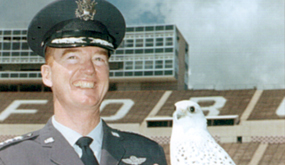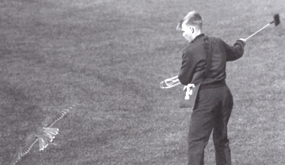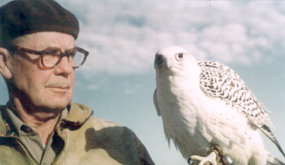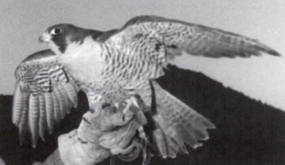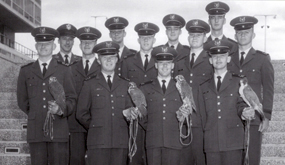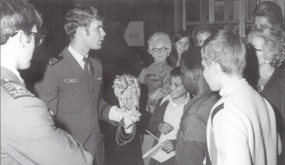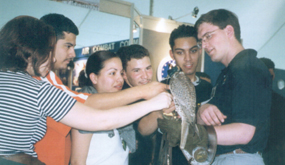Choosing a Mascot
Early Proposals. Even before the first class was admitted, there was interest at the new Air force Academy in adopting an appropriate mascot. In October 1954, Air Force Capt. Donald R. Gavin, in a letter to the Academy’s first superintendent, Lt. Gen. Huber R. Harmon, proposed the falcon. In a radio address the following month, Brig. Gen Woodbury Burgess, then Director of Intelligence, Air Defense Command, also recommended the falcon. A few months later Col. Russell L. Meredith, USAF (Ret.), a graduate of West Point, Class of 1917, a pioneer Army aviator and respected as the “Father of American Falconry” and President of the Falconry Club of America, also suggested to his friend General Harmon that the falcon be adopted as the Academy’s mascot. As a result of these suggestions and correspondence with the Secretary of the Air Force, the Academy’s Chief of Staff requested that the Commandant of Cadets study the matter and make recommendations concerning the selection of a mascot. (Page 9)

